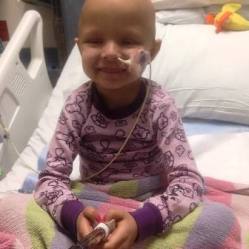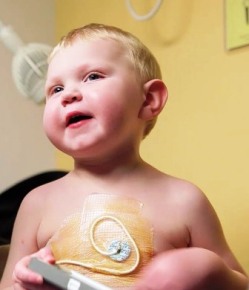
Methods Your Child with Cancer Can Take in Nutrients
As discussed in previous posts, it is vital that a Child with Cancer gets sufficient nutrients before, during, and after treatment in order to feel better and stay stronger, as well as to cope with treatment side effects.
Treatments for cancer such as Chemotherapy and Radiation Therapy take their toll on little bodies and these treatments as well as the cancer itself strip the child of vitality and severely impair their immune systems.
#Children with Cancer need protein, carbohydrates, fat, water, vitamins, and minerals. Unfortunately it is not always possible for them to get these purely from food, due to various side-effects of the cancer treatment.
There are many ways to help your child get the nutrients he or she needs.
The most common methods are:
Orally (By Mouth)
 The best way for your child (or anyone else) to get all the nutrients that they need is from eating nutrient-rich foods and drinking fluids as part of a healthy, well-balanced diet. Regular healthy snacks can also play a part.
The best way for your child (or anyone else) to get all the nutrients that they need is from eating nutrient-rich foods and drinking fluids as part of a healthy, well-balanced diet. Regular healthy snacks can also play a part.
Your child may be able to get extra nutrients by eating high-calorie, high-protein meals supplemented with snacks, and homemade drinks and shakes. Liquid nutrition products that can be purchased at the grocery store or pharmacy are also options if he or she has trouble eating due to the side-effects of the cancer or treatments, but remember to always discuss this with your child’s doctor first.
It is important that your child take in sufficient nutrients not only for weight-management, but also to give them the best possible treatment outcome. If it becomes impossible for your child to take in nutrients in the natural manner, their doctor may decide that a feeding tube is needed.
By Feeding Tube
 Tube feedings are given by threading a thin, flexible tube through the nose and into the stomach. The tube can be passed further along into the small intestine if your child is having trouble with nausea or vomiting.
Tube feedings are given by threading a thin, flexible tube through the nose and into the stomach. The tube can be passed further along into the small intestine if your child is having trouble with nausea or vomiting.
Once the tube is in place, your child can be fed complete liquid nutrition formulas through it, which can supply all of the calories, protein, vitamins, and minerals your child needs.
It is not too difficult to do tube-feedings at home with the help of family, friends, or caregivers once your child’s health care team has shown you how to do it. Your child will usually feel better once tube-feedings have begun due to the fact that their nutritional needs are being met.
Children who have feeding tubes can usually still eat. The tubes are very small and will not keep your child from swallowing. If your child needs a feeding tube, every effort will generally be made to ensure that they can take food by mouth as well. One method of doing this is for your child to be fed via tube at night to allow them to eat normally during the day.
Most young children get used to tube feedings within a few days, but older kids and teens may need longer. Some children or parents may have fears or concerns about the way the tube works or looks, and both would benefit from speaking to others who have previously gone through tube-feeding.
Tube feedings are generally used to boost weight in children with poor appetites, but may also be used for youngsters who cannot eat or drink.
A more long-term type of tube can be put through the skin of the abdomen directly into the stomach (a gastrostomy or g-tube) or the intestines (a jejunostomy or j-tube); this surgery can be done in an outpatient setting.
Talk to your child’s health care team about tube-feeding in order to fully understand the likely benefits and possible issues for your child.
By Vein
 Sometimes tube feedings are not sufficient to give all the fluids and nutrients a child needs.
Sometimes tube feedings are not sufficient to give all the fluids and nutrients a child needs.
In such cases, nutrient solutions can be given directly into a vein. This is called intravenous nutrition or parenteral nutrition (PN).
PN is most often used when the stomach and intestines are not working properly. PN solutions can usually meet all of a child’s nutritional needs for a time.
Like tube feedings, PN can be given at home. Short-term use of PN is a safe way to support your child until the stomach or intestine is better.
Once these issues go away every effort should be made to switch to tube or mouth feedings because PN is not as good for the body as eating or tube feeding, and can be hard on the liver.
Source: Little Fighters Cancer Trust | Author: LFCT



Most Commented